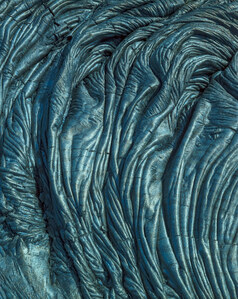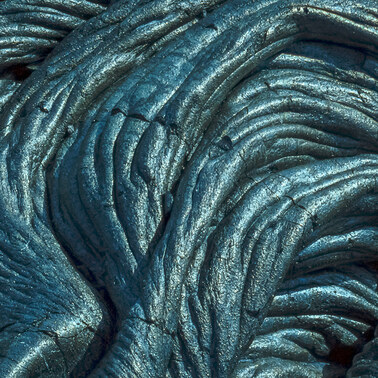
Pahoehoe lava, Hawaii Volcanoes National Park, Hawaii
The Hawaiian Islands were, and still are being formed, as the tectonic plate which forms the Pacific Ocean floor in the area moves north and west over a "hot spot" in the Earth's mantle. Midway is one of the earliest extant islands formed this way. Kaua‘i is the oldest of the major islands, and so has the greatest degree of erosion and the most spectacular cliffs in the Hawaiian Islands proper. The island of Hawaii is the newest and largest island to break the surface of the sea (another one is well underway beneath the sea a few miles southeast of it), and it has the greatest volcanic activity. Eruptions of liquid basalt, as opposed to ash-producing explosive eruptions, are the norm here. Two general physical types of this lava are produced: one is called ‘a‘a (ah´ ah), which is very rough and chunky, and the other is called pahoehoe (pa ho´ e ho´ e), which is very runny and cools quickly on the surface to create an amazing and very entertaining variety of twisting, ropey forms of a foamed volcanic glass that sounds like glass rice crispies when you walk on it. At close range it is covered with a beautiful variety of color sheens and forms that bear a slight resemblance to Venetian glass beads. Many square miles of land on the southeastern slopes of the island are continuously covered with such lavas of less than ten years of age. It weathers after about that many years to a dull brown. A few decades later it is often covered with a forest of giant ferns and ohia trees. The higher of the two summits of the island, Mauna Kea, at 13,796 feet, is actually the tallest mountain on Earth, measured from the ocean floor, at about 35,000 feet in all.

